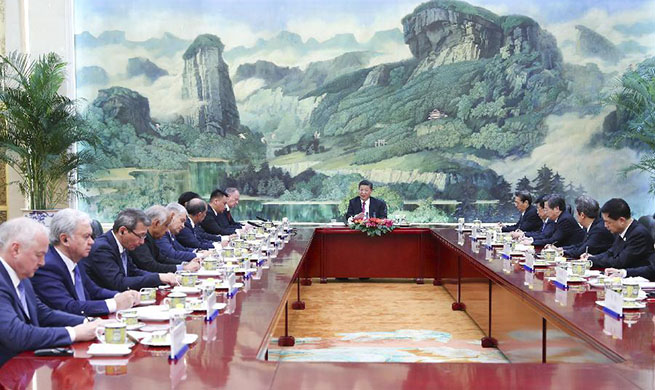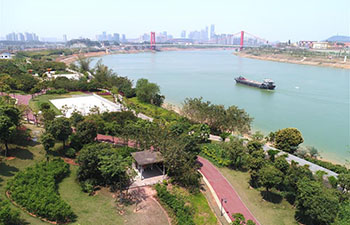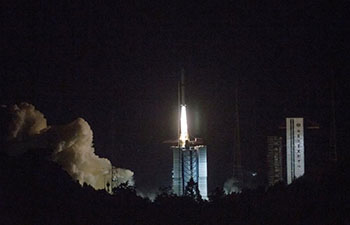XINING, May 23 (Xinhua) -- Fifth-grader Dekyi Yungdrung likes to write in Tibetan and her mother takes pride in her daughter's creativity.
"She finds beauty in life, and renders the beauty with her writing. I enjoy listening to her read her own compositions to me," said mother Polha.
Dekyi Yungdrung, 13, attends Wanquan No.3 Elementary School in Nangchen County, Yushu Tibetan Autonomous Prefecture in northwest China's Qinghai Province.
There are 55 students in her class. Starting from the first grade, the students have at least one class every day in Tibetan, and they are required to write at least one essay in Tibetan every week.
Sherab Dorje, director of the county education bureau, has traveled extensively across Qinghai, which has many Tibetan ethnic minority communities. He knows about the history of the Tibetan language use in elementary and middle schools.
"Until 30 years ago, very few people went to school. Students from poor families could not afford education," he said. "They spoke Tibetan, but were not able to write."
"Now, everywhere you go, schools have the best infrastructure you can find in Qinghai, and that is a remarkable change," he said.
In recent years, the growing investment and government efforts into educational resources in predominantly Tibetan areas of the province have increased dramatically, said Sherab Dorje.
According to figures provided by the Education Department of Qinghai Province, in the 1950s, there were only 14 elementary schools, with 900 students, in predominantly Tibetan areas of the province. At the beginning of this century, some 700 elementary schools and 70 middle schools taught classes in Tibetan. The number of students exceeded 200,000.
Currently, the enrollment rate at primary and middle schools in Qinghai's Tibetan areas is over 90 percent, there are enough teachers to meet the demands of students and Tibetan language education has been promoted, the department said.
Starting from 2016, a 15-year free education policy began to be implemented. In addition to the nine years of free elementary and junior high school education provided across the country, in Tibetan areas of Qinghai, three years of kindergarten and three years of senior high school are also included.
The number of Tibetan-speaking teachers is also on the rise. Eight colleges and universities have been founded in the province since 1956. Since 2012, Qinghai has invested 640 million yuan (about 100 million U.S. dollars) in teacher training.
Despite overall improvement, education in remote herding areas of Qinghai is still weak, the educational department said.
In order to bridge the gap, at least 120 outstanding high-school graduates from herding areas are selected every year to take courses that prepare them to be teachers.
Training centers and teachers' labs have been set up in universities including Qinghai Normal University and Qinghai Nationalities University.
Qinghai has a population of 5.8 million, with one-quarter ethnic Tibetans, according to official statistics in 2015. The province has five Tibetan autonomous prefectures, Yushu, Hainan, Haibei, Huangnan, and Golog, as well as Haixi Mongol and Tibetan Autonomous Prefecture. Each has regulations to protect the public right to use and learn the Tibetan language.
In order to facilitate language learning, educational authorities have translated more than 130 sets of books from Mandarin Chinese to Tibetan. The province spends 17 million yuan (2.69 million dollars) every year to publish books on mathematics, physics, chemistry, art, and physical education, in Tibetan and provides them free of charge for students.
"The channels for learning Tibetan are more diverse than before," said Tashi Dawa, a resident of Gonghe County of Hainan Tibetan Autonomous Prefecture.
The government has also invested heavily in the digital development of Tibetan language. In 2016, developers launched China's first Tibetan-language search engine yongzin.com. So far visits have exceeded 300 million.

















